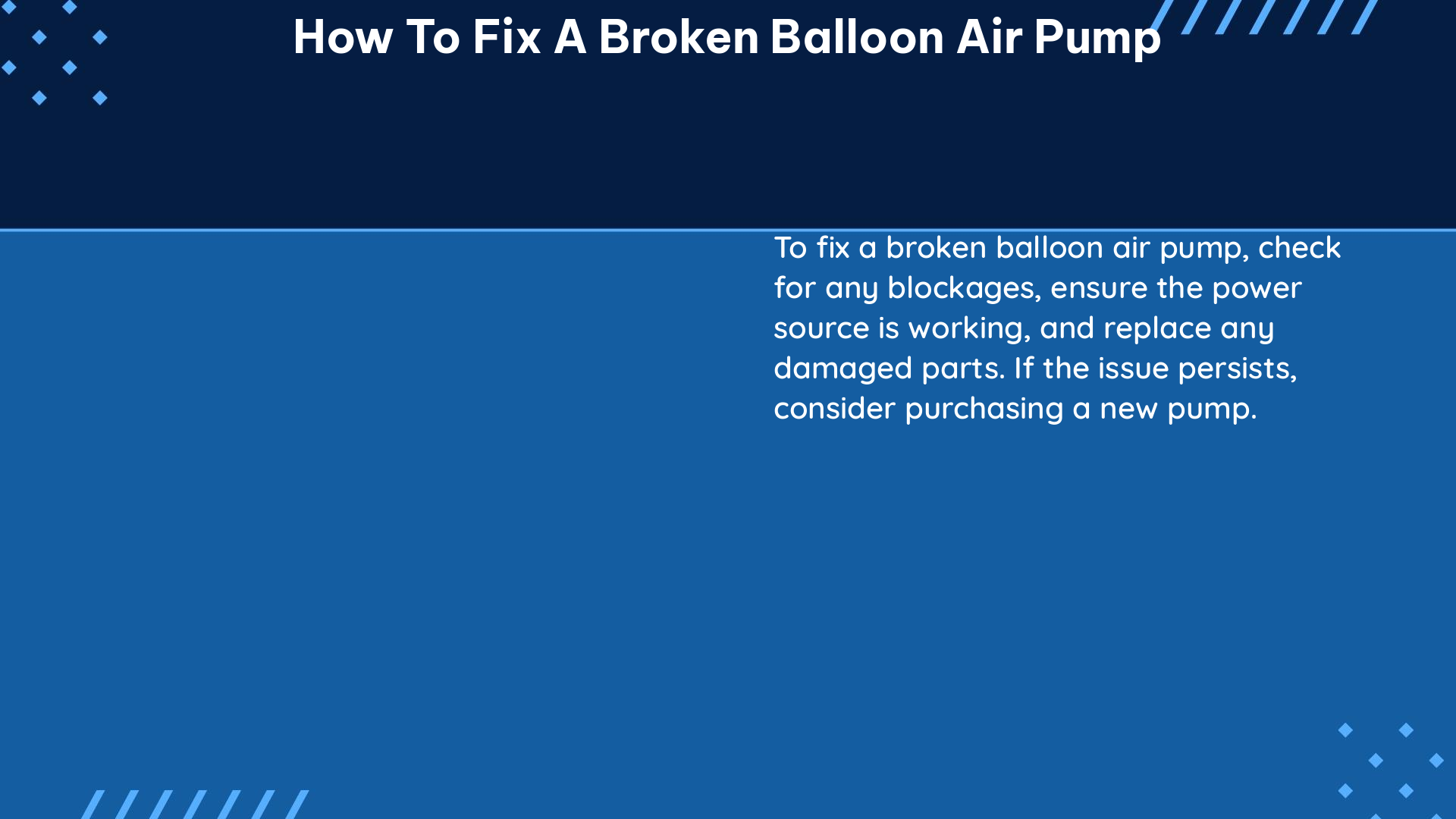Fixing a broken balloon air pump can be a daunting task, but with the right approach and attention to detail, it can be a straightforward process. This comprehensive guide will walk you through the necessary steps to diagnose and repair a malfunctioning balloon air pump, providing you with advanced hands-on details and technical specifications to ensure a successful outcome.
Identify the Problem
The first step in fixing a broken balloon air pump is to identify the root cause of the issue. Begin by measuring the volume of air the pump is able to produce and compare it to the manufacturer’s specifications. If the pump is producing significantly less air than expected, it may be clogged or damaged.
To measure the pump’s air output, you’ll need a graduated cylinder or volumetric flask. Connect the pump’s outlet to the measuring device and turn it on. Observe the volume of air being produced and note any discrepancies from the manufacturer’s stated performance.
Clean the Pump

If the pump is clogged, it may be possible to clean it and restore its function. Start by measuring the diameter of the pump’s inlet and outlet ports using a ruler or caliper. This information will be crucial when selecting the appropriate cleaning tools.
Next, use a thin, flexible wire or a small brush to carefully remove any debris that may be obstructing the ports. Be gentle and avoid applying excessive force, as this could further damage the internal components. Once the ports are clear, reassemble the pump and test it again to ensure the issue has been resolved.
Replace the Diaphragm
If the pump’s diaphragm is damaged, it will need to be replaced. Measure the diameter and thickness of the diaphragm using a micrometer or caliper, and purchase a replacement part that matches these specifications. Carefully disassemble the pump, remove the old diaphragm, and install the new one, following the manufacturer’s instructions.
When handling the new diaphragm, be mindful of its delicate nature and avoid stretching or tearing it. Ensure that it is properly seated and aligned before reassembling the pump.
Lubricate the Pump
If the pump is making unusual noises or is difficult to operate, it may be lacking proper lubrication. Measure the volume of the pump’s cylinder using a graduated cylinder or volumetric flask. This information will help you determine the appropriate amount of lubricant to use.
Purchase a lubricant that is specifically designed for use with balloon air pumps, and add it to the pump in small increments until the pump operates smoothly. Avoid using excessive amounts of lubricant, as this can lead to other issues.
Test the Pump
After making any repairs or adjustments, it’s essential to test the pump to ensure it is functioning properly. Measure the volume of air the pump is able to produce and compare it to the manufacturer’s specifications. If the pump is still not performing as expected, you may need to repeat the troubleshooting process or seek further assistance.
Remember, the volume of a gas is inversely proportional to its pressure and directly proportional to its temperature and the amount of gas. This means that if the pressure in the pump increases, the volume of air it can produce will decrease, and vice versa. Additionally, Boyle’s Law and Charles’s Law can provide valuable insights into the relationship between pressure, temperature, and volume in the pump’s operation.
By following these advanced steps and paying close attention to the technical details, you can effectively diagnose and repair a broken balloon air pump, ensuring it operates at its optimal performance.
References
- How to fix a balloon Pump problems – YouTube
- How to fix a broken balloon pump? – YouTube
- fixing pumps – Balloon Chat

The lambdageeks.com Core SME Team is a group of experienced subject matter experts from diverse scientific and technical fields including Physics, Chemistry, Technology,Electronics & Electrical Engineering, Automotive, Mechanical Engineering. Our team collaborates to create high-quality, well-researched articles on a wide range of science and technology topics for the lambdageeks.com website.
All Our Senior SME are having more than 7 Years of experience in the respective fields . They are either Working Industry Professionals or assocaited With different Universities. Refer Our Authors Page to get to know About our Core SMEs.